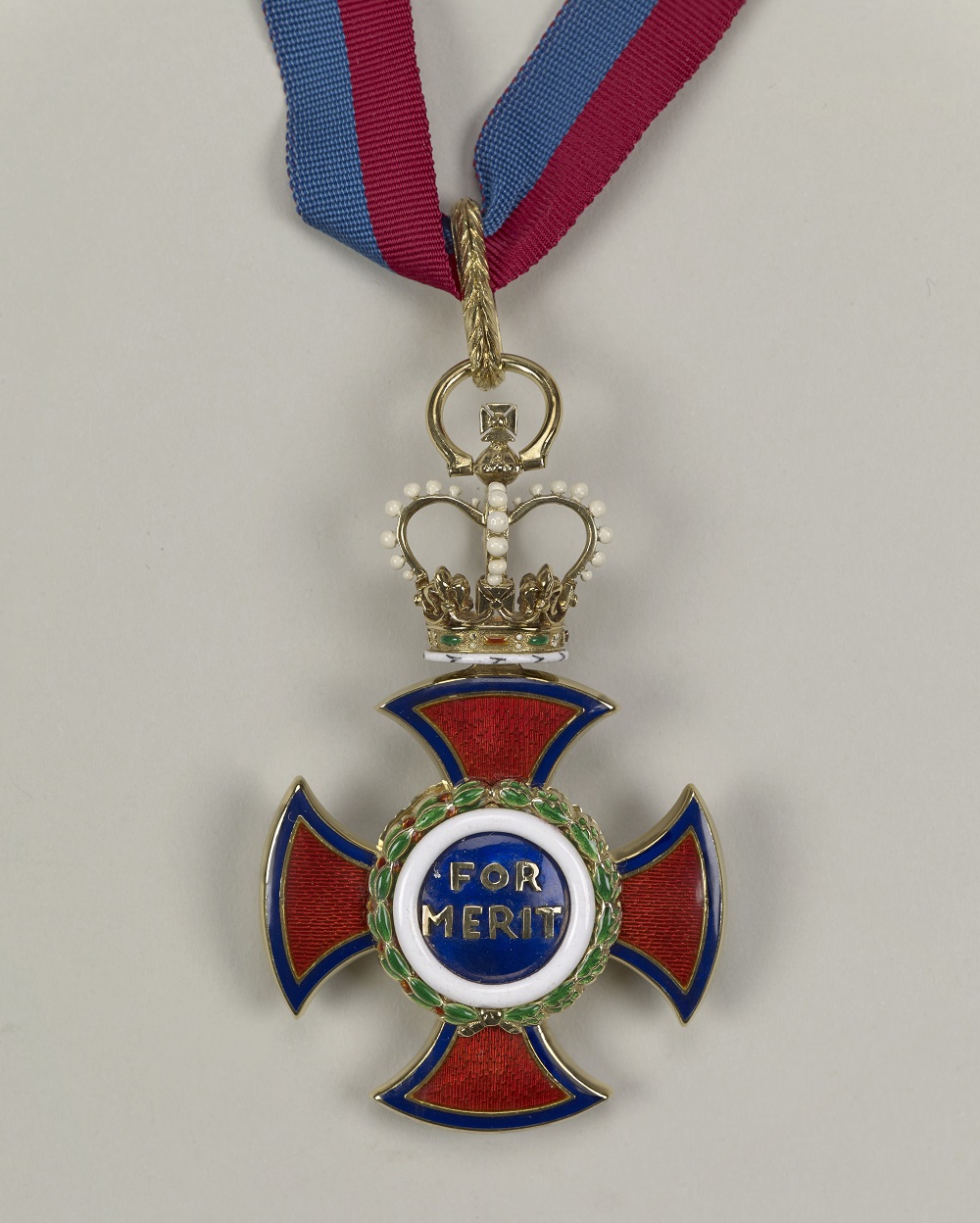What is the Order of Merit?
When was the Order of Merit established in the United Kingdom? And who are the Order’s most notable recipients? Here’s all you need to know about the ‘most exclusive club in the world.’

When was the Order of Merit established?
The Order of Merit was founded by Edward VII on 23 June 1902. It was founded to reward those who had provided "exceptionally meritorious service in Our Crown Services or towards the advancement of Arts, Learning, Literature, and Science."
In the Order of Wear, an official list which describes the order in which honours, decorations and medals should be worn, the Order of Merit is ranked immediately after Knights and Dames Grand Cross of the Order of The Bath and before Order of The Star of India.
What happens when someone is appointed to the Order of Merit?
The Order of Merit carries no title of knighthood, though a member is entitled to add “O.M.” after his or her name.
Once appointed to the Order, members are given a red and blue enamel badge. In the centre of the badge are the words ‘FOR MERIT’. The letters are in gold lettering and are surrounded by a laurel wreath. Since 1991, when a member dies the badge must be returned to the King, who then gives it to a new member.
The King also has a portrait painted of each member of the Order of Merit, which becomes part of the royal collection.
Who is eligible for the Order of Merit?
The Order of Merit is often referred to as the "most exclusive club in the world". This is because although all citizens of the Commonwealth realms are eligible for appointment, the Order of Merit is limited to only 24 living members at any one time.
Both men and women can be admitted into the order, with Florence Nightingale (Gazette issue 28084) the first woman to receive the honour in 1907. However, no other woman received membership again until 1965 when British chemist Dorothy Hodgkin was appointed (Gazette issue 43610).
The British monarch can also appoint foreigners as ‘honorary members.’ As well as those outside of the Commonwealth, people who are from countries in the Commonwealth of Nations which are not headed by The King are also considered foreigners. There have only been 11 honorary members of the Order of Merit, including the likes of Mother Teresa, Dwight D. Eisenhower and Nelson Mandela. However, there have been no honorary members since the death of Mandela in December 2013.
Who has received the Order of Merit?
The first twelve members of the Order of Merit were appointed on 26 June 1902 (Gazette issue 27470). They included:
- The Earl Roberts – a general who was one of the most successful British military commanders in history having fought in the Second Anglo-Afghan War and led British Forces to success in the Second Boer War
- The Lord Rayleigh – a scientist who won the Nobel Prize in Physics in 1904 "for his investigations of the densities of the most important gases and for his discovery of argon in connection with these studies"
- William Edward Hartpole Lecky - an Irish historian who wrote the eight-volume History of England during the Eighteenth Century
- Sir William Huggins – an English astronomer best known for his pioneering work in astronomical spectroscopy
- George Frederic Watts – a British painter and sculptor associated with the Symbolist movement
Many of Britain’s most celebrated composers, writers, scientists and politicians have been admitted into the Order of Merit, including:
- Benjamin Britten (Gazette issue 43610)
- Winston Churchill (Gazette issue 37407)
- Edward Elgar (Gazette issue 28505)
- T. S. Eliot (Gazette issue 38161)
- Thomas Hardy (Gazette issue 28393)
- Margaret Thatcher (Gazette issue 52360)
- Ralph Vaughan Williams (Gazette issue 34166)
However, it’s also reported that many other British greats have refused to be members of the order, including Rudyard Kipling, A. E. Housman, and George Bernard Shaw.
Who is currently in the Order of Merit?
There are currently 24 members in the Order of Merit:
- Baron Foster of Thames Bank(Gazette issue 54962)
- Sir Roger Penrose (Gazette issue 55859)
- Sir Tom Stoppard (Gazette issue 55859)
- The Lord Rothschild (Gazette issue 56746)
- Sir David Attenborough (Gazette issue 57645)
- The Baroness Boothroyd (Gazette issue 57645)
- The Lord Eames (Gazette issue 58379)
- Sir Tim Berners-Lee (Gazette issue 58379)
- The Lord Rees of Ludlow (Gazette issue 58379)
- Jean Chrétien (Gazette issue 59131)
- Neil MacGregor (Gazette issue 59606)
- David Hockney (Gazette issue 60028)
- John Howard (Gazette issue 60028)
- Sir Simon Rattle (Gazette issue 60728)
- Sir Magdi Yacoub (Gazette issue 60728)
- The Lord Darzi of Denham (Gazette issue 61470)
- Dame Ann Dowling (Gazette issue 61470)
- Sir James Dyson (Gazette issue 61470)
- Sir David Adjaye (Gazette issue 63387)
- Dame Elizabeth Anionwu (Gazette issue 63387)
- The Baroness Benjamin (Gazette issue 63387)
- Margaret MacMillan (Gazette issue 63387)
- Sir Paul Nurse (Gazette issue 63387)
- Sir Venkatraman Ramakrishnan (Gazette issue 63387)
See also
What is the 'Order of Wear' for British honours, decorations and medals?
American citizens with honorary British knighthoods and damehoods
Birthday and New Year honours lists (1940 to 2022)
Image: Royal Collection Trust / © His Majesty King Charles III 2022
Publication updated: 28 November 2022
Any opinion expressed in this article is that of the author and the author alone, and does not necessarily represent that of The Gazette.
